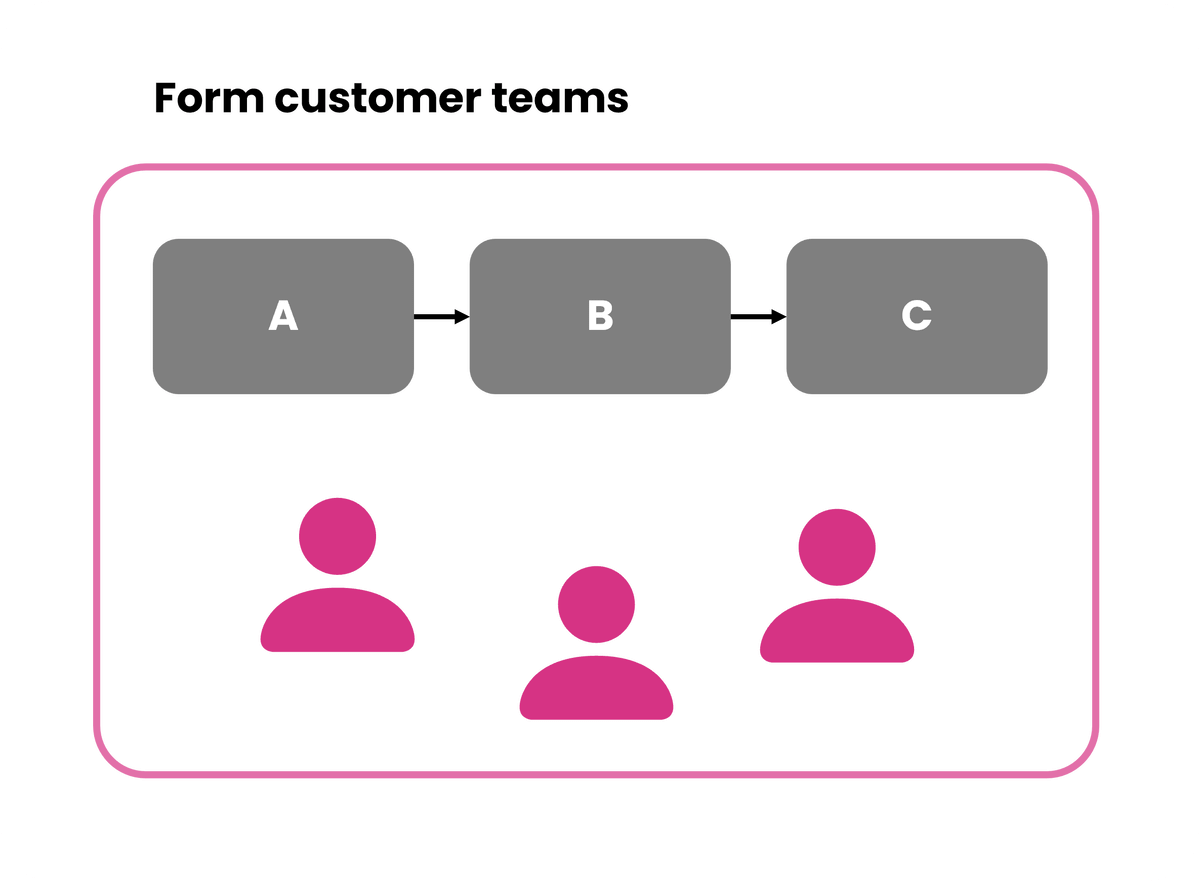Work in customer teams
Form cross-department teams for end-to-end case handling.
Compose work teams of people from different departments that will take care of the complete handling of specific sorts of cases
Reijers, H., & Liman Mansar, S. (2005). Best practices in business process redesign: an overview and qualitative evaluation of successful redesign heuristics. Omega, 33(4)
Description
Customer teams are an advantageous method that brings together employees from various departments to handle specific types of process instances or cases. The primary responsibility of the team is to oversee a case, with individual members not necessarily involved in executing the case itself. This collaborative approach allows for easy access to shared and distributed knowledge, departmental resources, and tools, enabling a comprehensive examination of a case from multiple perspectives. By utilizing customer teams, organizations can enhance their problem-solving capabilities and provide more efficient and effective resolutions for their customers.

Performance considerations
In summary, customer teams offer a valuable solution for efficiently handling specific cases. By implementing this pattern, organizations can tap into the expertise of multiple workers while also promoting teamwork and enhancing overall quality.
Share this pattern
Enjoy these
Foundational free Patterns
Combine small activities into composite activities
Form cross-department teams for end-to-end case handling.
Establish standardized interfaces
Consider a standardized interface with customers and partners
Avoid shared responsibilities for tasks by people from different functional units
Start implementing actions that can offset or counterbalance the environmental effects generated by business processes that cannot be changed.
Let products appear greener
Experience-based task assignment
Delegate task according to experience: execution frequency, case involvement, interactions
Allocate task based on past feedback or quality metrics
Distribute tasks by interdepartmental interactions to enable or restrict involvement
Share this
Connected to
Let workers perform as many steps as possible for single cases
Experience-based task assignment
Delegate task according to experience: execution frequency, case involvement, interactions
Assign a responsible individual for handling each case type
Allocate task based on collaborative experience: handover time, interactions, diversity
Distribute tasks by interdepartmental interactions to enable or restrict involvement